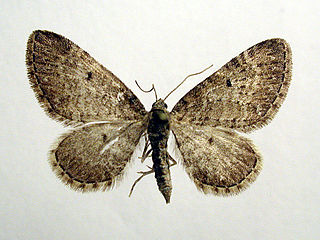
Eupithecia satyrata, the satyr pug, is a species of moth of the family Geometridae. It was described by Jacob Hübner in 1813. It is found from Ireland, through northern and central Europe east to all of Russia and central Asia and western Siberia to Tibet. It is also present in North Africa and North America.

Eupithecia bryanti is a moth in the family Geometridae first described by Taylor in 1906. It is found from Alaska, the Yukon Territory, Alberta and British Columbia, through Washington, Oregon, Montana, Idaho, Wyoming and Utah to California.

Eupithecia borealis is a moth in the family Geometridae first described by George Duryea Hulst in 1898. It is found in North America, including Alberta, Arizona, British Columbia, California, Colorado, Manitoba, Michigan, Montana, New Brunswick, New Mexico, New York, Newfoundland and Labrador, Nova Scotia, Ontario, Quebec, Utah and Wyoming.
Eupithecia casloata is a moth in the family Geometridae first described by Harrison Gray Dyar Jr. in 1904. It is found in North America, including Yukon, British Columbia, Alberta, Saskatchewan, New Brunswick, Newfoundland and Labrador, Quebec, Washington, Montana, Oregon, Wyoming, Colorado, Utah, California, Maine and New Hampshire.
Eupithecia nimbosa is a moth in the family Geometridae first described by George Duryea Hulst in 1896. It is widespread in the Rocky Mountains, from Arizona to the Canada–US border.
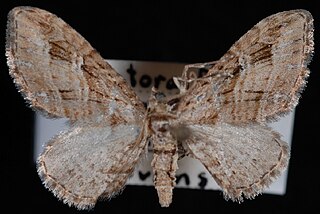
Eupithecia niphadophilata is a moth in the family Geometridae first described by Harrison Gray Dyar Jr. in 1904. It is found in North America from British Columbia and western Alberta south to New Mexico.
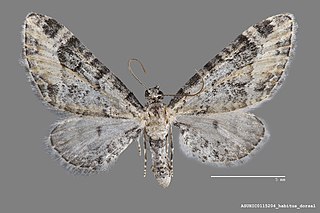
Eupithecia agnesata is a moth in the family Geometridae first described by Taylor in 1908. It is found in North America from California through Wyoming, Oregon and Washington to British Columbia.
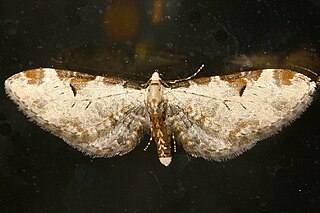
Eupithecia nevadata is a moth in the family Geometridae first described by Alpheus Spring Packard in 1871. It is found in western North America.
Eupithecia slossonata is a moth in the family Geometridae first described by James Halliday McDunnough in 1949. It is found in the US states of Florida, Georgia, Kentucky and Maryland.
Eupithecia sabulosata is a moth in the family Geometridae first described by James Halliday McDunnough in 1944. It is found in the US state of California.

Eupithecia placidata is a moth in the family Geometridae first described by Taylor in 1908. It is found in western North America from British Columbia south to California.

Eupithecia regina is a moth in the family Geometridae first described by Taylor in 1906. It has been recorded in North America from Manitoba, Saskatchewan, Alberta, British Columbia, Georgia and North Carolina.

Eupithecia rotundopuncta is a moth in the family Geometridae first described by Alpheus Spring Packard in 1871. It is found in western North America from Arizona to the Pacific coast, north to Vancouver Island in British Columbia.

Eupithecia russeliata is a moth in the family Geometridae first described by Louis W. Swett in 1908. It is widespread in North America, including Alberta, California, Kentucky, Maine, Maryland, Minnesota, New Brunswick, Newfoundland and Labrador, North Carolina and Nova Scotia.
Eupithecia indistincta is a moth in the family Geometridae first described by Taylor in 1910. It is found in North America in Quebec and throughout the northern Atlantic states. It has also been recorded from California.
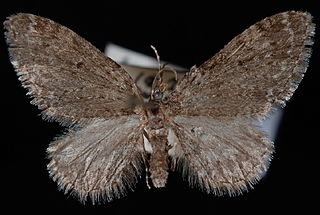
Eupithecia annulata, the larch pug moth, is a moth in the family Geometridae. The species was first described by George Duryea Hulst in 1896. It is found in North America from British Columbia north to the Yukon, east to Newfoundland and Labrador and south to California and Colorado.
Eupithecia tenuata is a moth in the family Geometridae first described by George Duryea Hulst in 1880. It is found in western North America from southern British Columbia through the Rocky Mountain region to Arizona and New Mexico.

Eupithecia spermaphaga is a moth in the family Geometridae first described by Harrison Gray Dyar Jr. in 1917. It is found in western North America from British Columbia, through Oregon and Washington to Nevada and California.
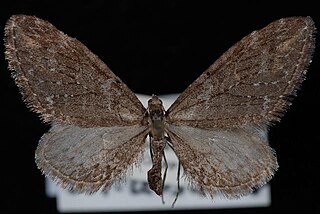
Eupithecia scabrogata is a moth in the family Geometridae first described by Pearsall in 1912. It is found in western North America from British Columbia to California and Arizona.
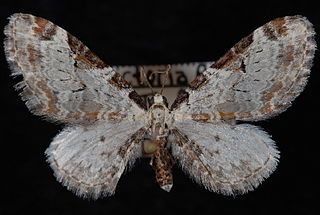
Eupithecia ravocostaliata, commonly known as the tawny eupithecia or great variegated pug, is a species of moth in the family Geometridae. The species was first described by Alpheus Spring Packard in 1876. It is found in northern New York and the New England states, extending across Canada from the Maritime provinces to Vancouver Island and down the west coast as far as the San Francisco Bay region.














